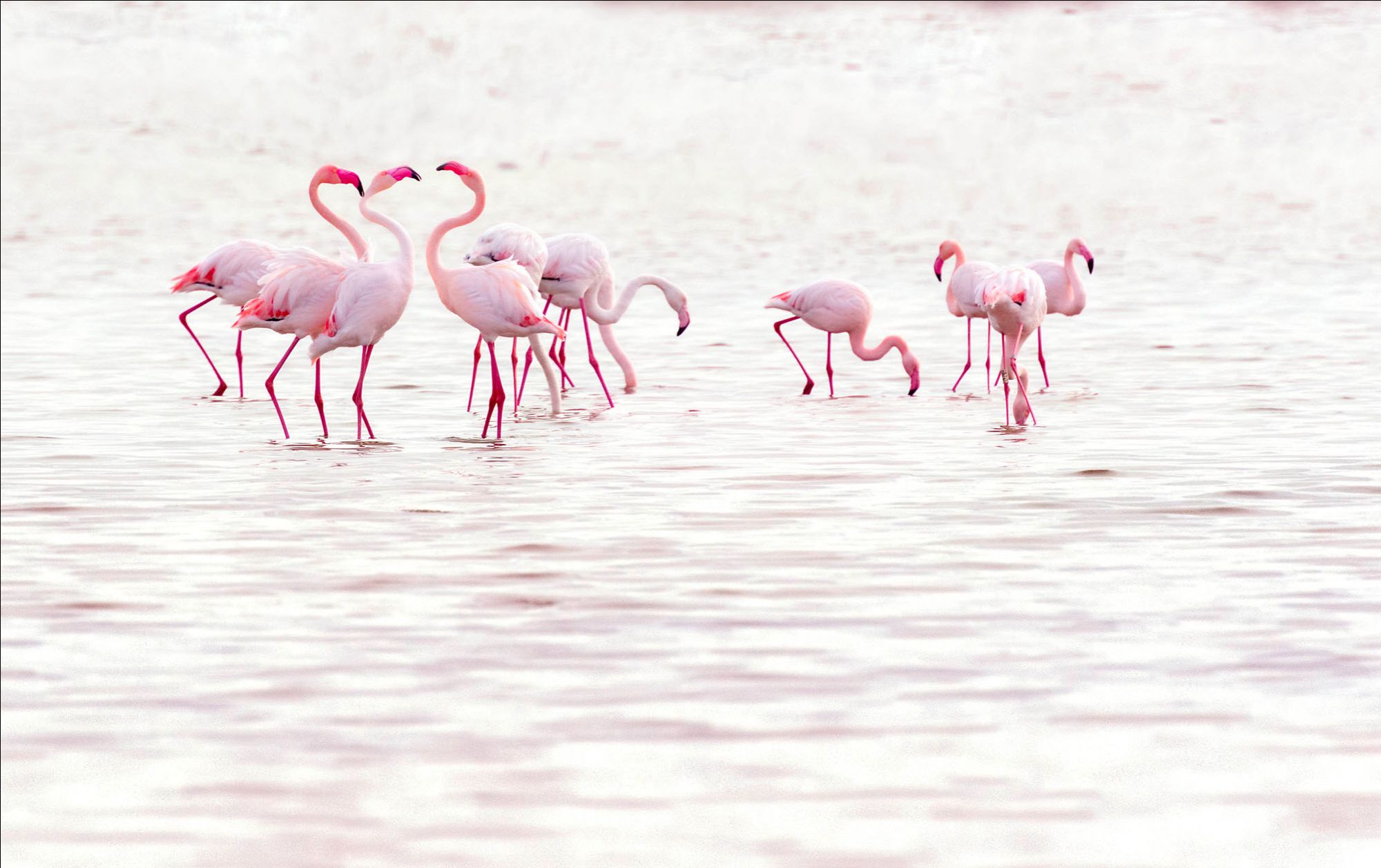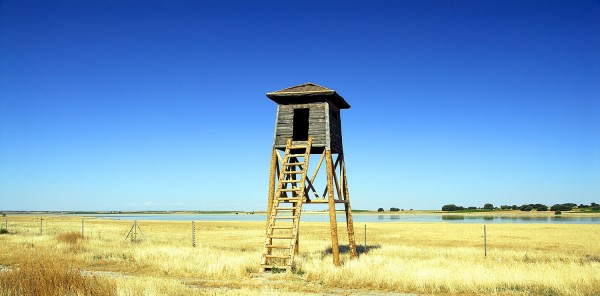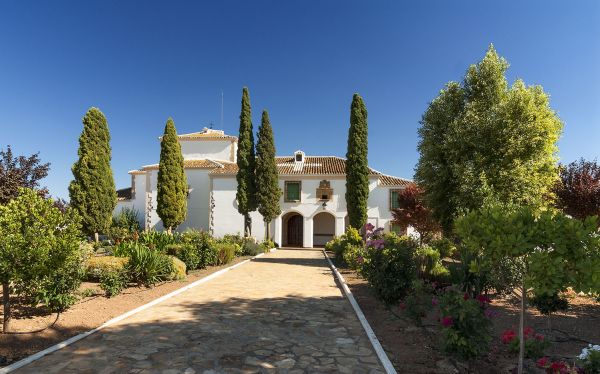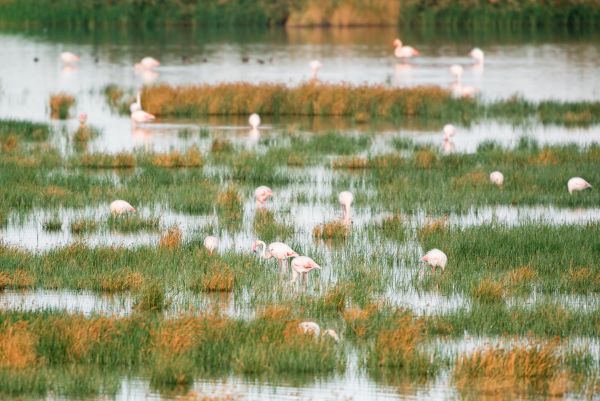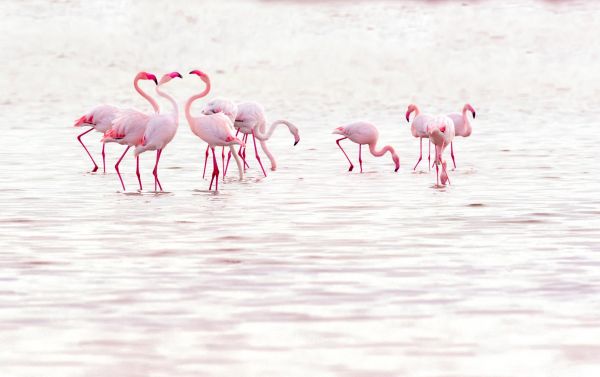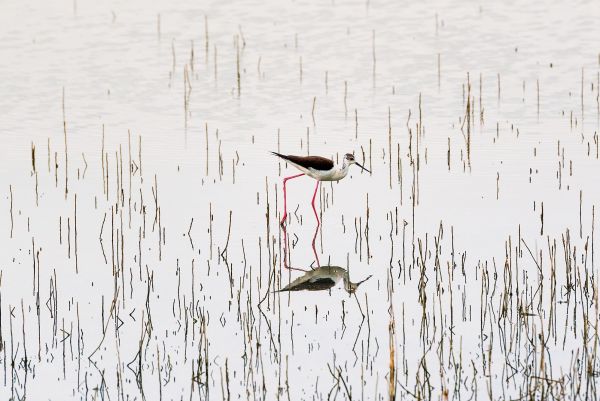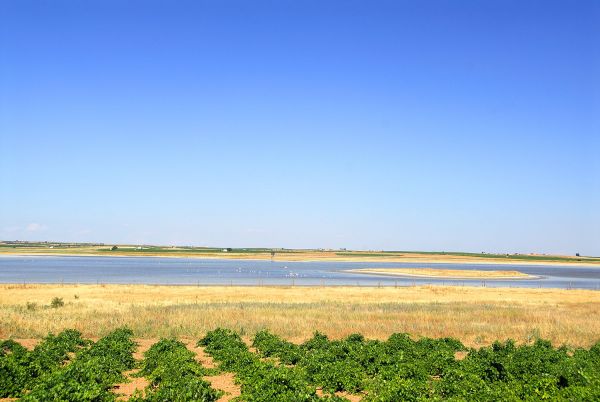A paradise for birds. La Mancha seas (Ciudad Real and Cuenca)
Ciudad Real, Cuenca
In the large natural region of La Mancha, in the point where the provinces of Toledo, Cuenca, Ciudad Real and Albacete meet, we find several wetlands in the form of lagoons and pools, spread over 30 municipalities in the 4 provinces. These are our small, inland seas.
These wetlands are not very deep and have water seasonally; some years, there can be a lot of water, and in others, they dry up. The banks and large parts of the basins, when dry, become covered with plants adapted to the saline soils and give rise to a strange landscape; some represent ecosystems similar to the most primitive on earth; others are like the coast.
All these areas have in common great natural value due to their geographical position, which make them stopping places on migratory routes for a large variety of birds. The salinity of certain wetlands provides a fundamental biomass development for accommodating large numbers of wildlife.
We are certainly witnessing a unique scene; like an oasis, we see water and life where we least expect it: in the dry and infinite La Mancha plains.
Ciudad Real
Three lagoons make up the San Juan Fortress Lagoon Complex Nature Reserve: La Veguilla, Camino de Villafranca and Las Yeguas. This lagoon complex is extremely important as a reproduction and/or wintering area for a large number of birds associated with the wetlands (waterfowl, waders and flamingos). There are also notable vegetation formations related to the saline environment.
From the interpretation centre, an interpretative trail begins that goes to different observatories located on the banks of the La Veguilla lagoon. At the Camino de Villafranca and Las Yeguas lagoons, there are observatories on the banks. These are accessed by a track suitable for vehicles.
Salicor is the only lake in Campo de Criptana, which is noteworthy due to its uniquely beautiful landscapes, mainly when dry, displaying a salt crust of several centimetres in thickness; with a salt content several times higher than the Mediterranean and very similar to the Dead Sea. The bird populations are impressive: crane, bustard and stone curlew, and it is the preferred place of the peregrine falcon, which uses the area for hunting throughout the whole year.
It’s the perfect place for a stroll.
The Pedro Muñoz Lagoon Complexcomprises the Retamar, Vega and Navalafuente lagoons. It is the ideal spot for studying and watching wildlife, and several observation posts have been installed for this purpose. The Pueblo and Retamar lagoons are home to a particularly important community of aquatic birds, which include the white-headed duck, currently one of the most endangered species.
The Don Quixote Wetlands Interpretation Centre shows us the zone’s ecological richness through videos, interactive touch screens and information. Guided tours are available for school groups.
Cuenca
In Mota del Cuervo, the Manjavacas, Sánchez Gómez and Dehesilla lagoons make up the Manjavacas Lagoon Complex Nature Reserve, one of the region’s most important wetlands that receives numerous concentrations of birds all-year-round.
In winter months, there are thousands of examples of waterfowl, such as the mallard, the northern shoveler, the red-crested pochard, the northern pintail and the common pochard. In spring, the wetland’s most impressive show consists of the colony formed by hundreds of flamingo pairs, with sometimes more than 2,000 examples concentrating together at the same time. This season also regularly bears witness to large colonies of black-necked grebes, whiskered terns, black-headed gulls, gull-billed terns, black-winged stilts and avocets.
May also be of interest to you
Castilla-La Mancha Tourism in 2023. All rights reserved.
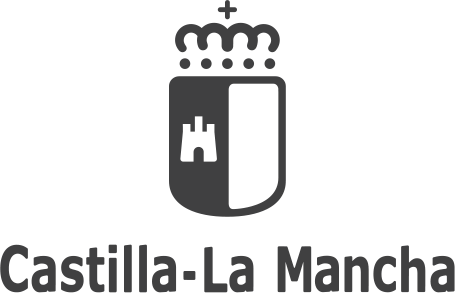
 365
365
